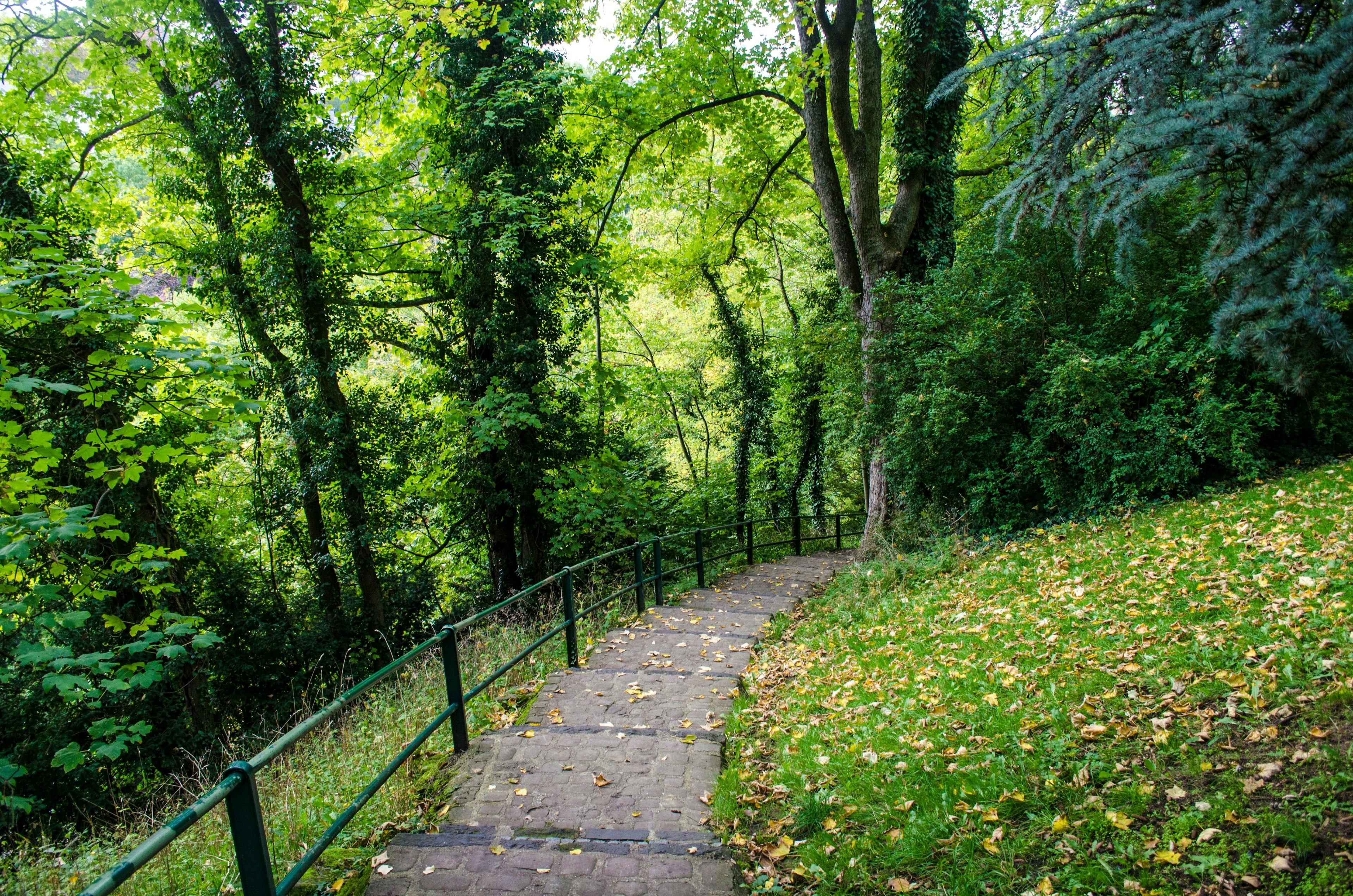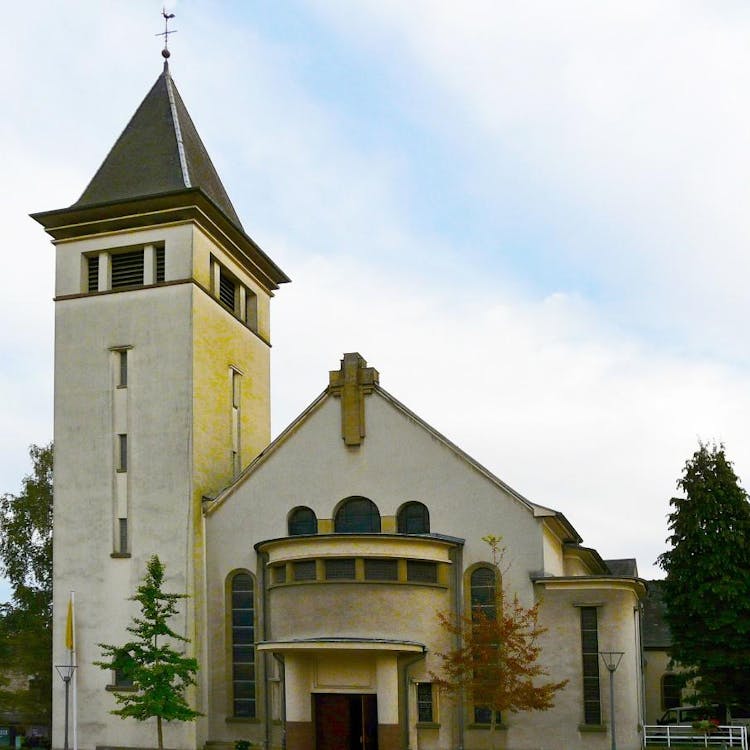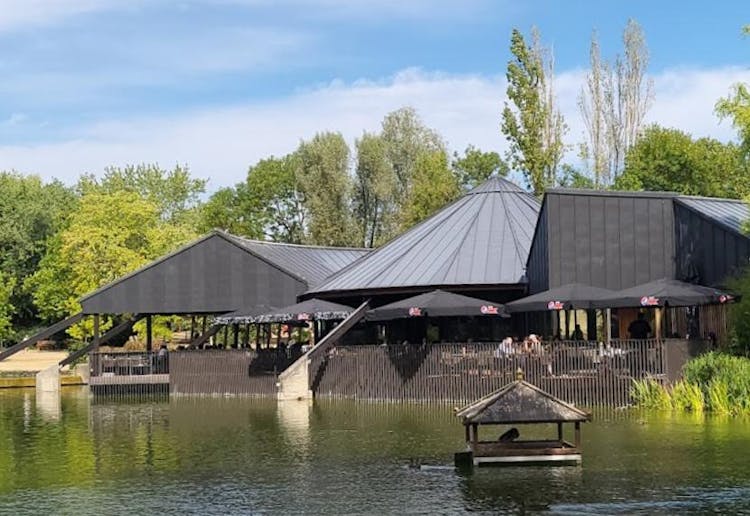
Merl: versatile and well-balanced neighborhood in Luxembourg City
This article will take you on a captivating journey through the charming neighborhood of Merl, exploring its unique features, cultural attractions, and seamless integration of nature and city life.
Known for its picturesque landscapes and rich cultural heritage, Luxembourg is home to many communities that offer a perfect blend of urban living and serene nature. One such gem is the Neighborhood of Merl, a tranquil haven nestled in the heart of Luxembourg City.
General characteristics of Merl
Nestled within its bounds, Merl accommodates a growing and increasingly diverse population. This district serves as a melting pot of cultures, with nearly 100 nationalities represented.
Population of Merl
The neighborhood of Merl, located in the western part of Luxembourg City, has rather big density of residency, as it is located in a great place to establish a home for families. It's population represents approximately 5% of the city's total population.
Merl is characterized by its cultural diversity, being home to a melting pot of nearly 100 different nationalities, following the trend of Luxembourg in general.
Transport accessibility
Merl benefits from a well-developed public transportation system, primarily relying on an extensive network of buses that ensures excellent interconnectivity throughout the district. As we mentioned before the neighborhood does not have tramway accessibility. Nevertheless, reaching the city center from Merl is a breeze, taking just about 15 minutes approximately regardless of whether you choose to travel by bus, car, or bike.




Renting and buying real estate
Merl is a well-connected district that appeals to a diverse range of residents, making it an ideal choice for families seeking a tranquil environment, high-quality living standards, and a vibrant cultural scene. Its serene streets and proximity to workplaces attract young professionals in search of a pleasant neighborhood to call home.
For buying the average price is:
For renting the average price is:
Applications, search, and profound advice in our guide to renting

Infrastructure of the neighborhood
The neighborhood boasts a rich cultural landscape, highlighted by prominent landmarks and buildings that contribute to its vibrant atmosphere. The Théâtre National de Luxembourg, the Luxembourg Conservatory of Music, and the Camoes Portuguese Cultural Center grace the district, offering residents and visitors alike a variety of cultural experiences.
Living in Merl: advantages and disadvantages
Merl is mostly a residential neighborhood and stands out for its close integration with nature. Despite being part of Luxembourg City, the community effortlessly incorporates lush green spaces and gardens, offering residents a respite from the hustle and bustle of city life.
Another advantage of living in Merl is its strategic location within the capital. The district enjoys proximity to several prominent landmarks, including Merl Park, the playground on Rue Charlemagne, and the esteemed high schools of the "Geesseknäppchen" campus, among other amenities.
Cultural enrichment is one of the standout features of Merl. The district houses the Théâtre National de Luxembourg and the Luxembourg Conservatory of Music.
Additionally, the area is well-served by numerous bus lines that facilitate excellent interconnectivity, however, one notable drawback of Merl is the lack of tramway accessibility.
What can you find in this quarter of Luxembourg City
The neighborhood boast the wide variety of activities, educational and recreational opportunities.
Additionally, sports enthusiasts can enjoy the facilities of the Prince Jean stadium, the Adam Roberti Sports Hall, an equestrian center, a gym, and several playgrounds. In the subsequent sections, we will delve deeper into the district's main buildings and important locations, exploring its infrastructure in more detail.
Merl offers a variety of educational options to cater to the needs of its residents. Within the district itself, there is one Luxembourgish elementary school, the Merl School, providing local students with a solid foundation. Additionally, the municipality operates a municipal daycare center on Rue de la Barrière, offering childcare services for young children within the immediate vicinity.
Moreover, the adjacent district houses the sprawling Geesseknäppchen School Campus, home to esteemed institutions such as the Luxembourg Conservatory of Music, the International School of Luxembourg (ISL), and several prominent Luxembourgish high schools, including Athénée de Luxembourg, Aline Mayrisch, Michel Rodange, and the School of Commerce and Management.
Merl school
Municipal nursery rue de la Barrière
Merl is home to a variety of cultural activities, housing the esteemed Luxembourg Conservatory of Music, the renowned Théâtre National de Luxembourg, and the captivating Centre Culturel Portugais Camoes IP.
Established in 1906, the Luxembourg Conservatory stands as a regional institution of great significance attracting nearly 3,800 students. With an extensive curriculum encompassing more than 150 disciplines, the conservatory not only serves as a recognized music school within Luxembourg and beyond but also thrives as a dynamic cultural center.
The Théâtre National du Luxembourg, a non-profit association founded in 1996, emerged as a powerful legacy of "Luxembourg – European Capital of Culture 1995." This vibrant theater, with its intimate 120-seat capacity, hosts a captivating repertoire of spoken theater, music performances, and concerts. Audiences are treated to diverse productions in languages such as French, German, Luxembourgish, and English.
Meanwhile, the Centre Culturel Portugais Camoes IP, inaugurated in 1999, plays a pivotal role in promoting the Portuguese language and culture. The center curates engaging exhibitions, enthralling performances, and insightful conferences, all dedicated to enhancing awareness and appreciation of Portuguese heritage.
Luxembourg Conservatory
Théâtre National du Luxembourg
Centre Culturel Portugais Camoes IP
Learn more about Luxembourg's culture and traditions in our special guide.
While Merl itself does not host a hospital, residents benefit from the proximity of three sites of the Centre Hospitalier de Luxembourg (CHL), located just north of the district. These sites include CHL Centre, CHL Maternité, and CHL KannerKlinik.
As the public hospital serving the city of Luxembourg, the Centre Hospitalier de Luxembourg offers a comprehensive range of medical services and specialties, ensuring that residents of Merl have access to high-quality healthcare facilities and expertise nearby.
CHL medical center provides emergency help for those in need. Read more about urgent healthcare in our dedicated article:
Emergency medical help in Luxembourg: ambulance and hospitals
- Address: 4 Rue Nicolas Ernest Barblé.
- Phone: (+352) 44 11 11, (+352) 44 11 31 33.
- Website: chl.lu.
Within the City of Luxembourg, a total of 14 cemeteries serve as final resting places for the departed, with one of them situated in the district of Merl. Located at the corner of Val Ste Croix and Rue des Aubépines, the Merl Cemetery provides a serene and respectful space for families to remember and honor their loved ones.
Merl may boast numerous green spaces, but it does not have its own dedicated park. However, just adjacent to the district in Hollerich, lies the Merl Park, a cherished municipal park that has stood the test of time. Serving as one of the city's oldest playgrounds, this park is a lush oasis amidst the urban landscape, making it an iconic and beloved landmark in Luxembourg's capital.
The park offers a delightful experience for children, equipped with various play facilities. At its heart, a central pavilion provides a perfect spot to quench your thirst or enjoy a sunny lunch by the picturesque lake. Merl Park truly captures the essence of nature within the bustling city, providing a tranquil respite for visitors and residents alike.
There is currently an upgrade project for the playground in Merl Park. You can check all the details on the Ville de Luxembourg website.
Beyond its recreational offerings, Merl Park also serves as a vibrant venue for artistic events and exhibitions. Periodically, the park hosts photography exhibitions, providing a unique fusion of art and nature. In 2023, as part of the Month of Photography, the park proudly features the exhibition "Rethinking Identity," an enthralling display comprising 16 large-format panels.
The Prince Jean Stadium stands as a prominent sporting venue within Merl. With a seating capacity of approximately 1,500, including 250 covered seats, the stadium provides an exciting and dynamic atmosphere for sports enthusiasts.
It proudly serves as the home ground for the football club FC Red Star Merl-Belair, a formidable team competing in the Luxembourgish second division championship.
- Address: 33 Rue de Strassen.
- Phone: (+352) 44 15 75.
While Merl is primarily a residential neighborhood, it offers convenient proximity to shopping centers for residents' retail needs. The City Concorde shopping center, situated to the west, and the Boomerang Strassen shopping center, located in the northern vicinity, cater to diverse shopping preferences, providing a wide range of stores and amenities.
You can learn more about all the Luxembourg shopping centers available in the city in our dedicated article.
Although there are not many restaurants in Merl, there are a few notable options to enjoy.
For Korean cuisine lovers, the Sodam Korean Restaurant on 1 Rue d'Orval serves delicious dishes that will satisfy your taste buds. Additionally, the Restaurant Ambiente, located further north on 285 Route d'Arlon, offers delightful Italian dishes. For more diverse dining choices, residents can explore the city center, which provides a broader array of restaurants with various cuisines and culinary experiences.
Merl historical overview
Merl has a fascinating history dating back to the Middle Ages when it was a small village outside the fortified walls of the city of Luxembourg. Over the centuries, the village has gradually evolved, adapting to the changing times while preserving its identity and natural beauty.
Formation
Initially, it was under the jurisdiction of the Hollerich parish. However, in the late 18th century, with the dissolution of all religious establishments, Merl gained autonomy and became a self-sustained neighborhood with its own parish.
Part of Luxembourg
This independence was short-lived as, in 1815, Merl lost its autonomy and became a part of the larger Hollerich neighborhood . Eventually, in 1920, Hollerich merged with the City of Luxembourg, incorporating Merl into the city's administrative landscape. Over the centuries, Merl has evolved from a quaint village to a vibrant district with a fascinating history that still echoes through its streets and landmarks.
Frequently Asked Questions (FAQ)
What makes Merl an attractive district to live in?
Are there any historical landmarks in Merl?
What shopping options are available in Merl?
Source: www.schoulmerl.com, www.vdl.lu, fr.wikipedia.org, www.conservatoire.lu, www.tnl.lu, www.instituto-camoes.pt, www.chl.lu, www.vdl.lu
We took photos from these sources: Nazim Coskun on Unsplash, Wikipedia, CHL website, Park Merl in Google Maps, RC Red Star Facebook Page



